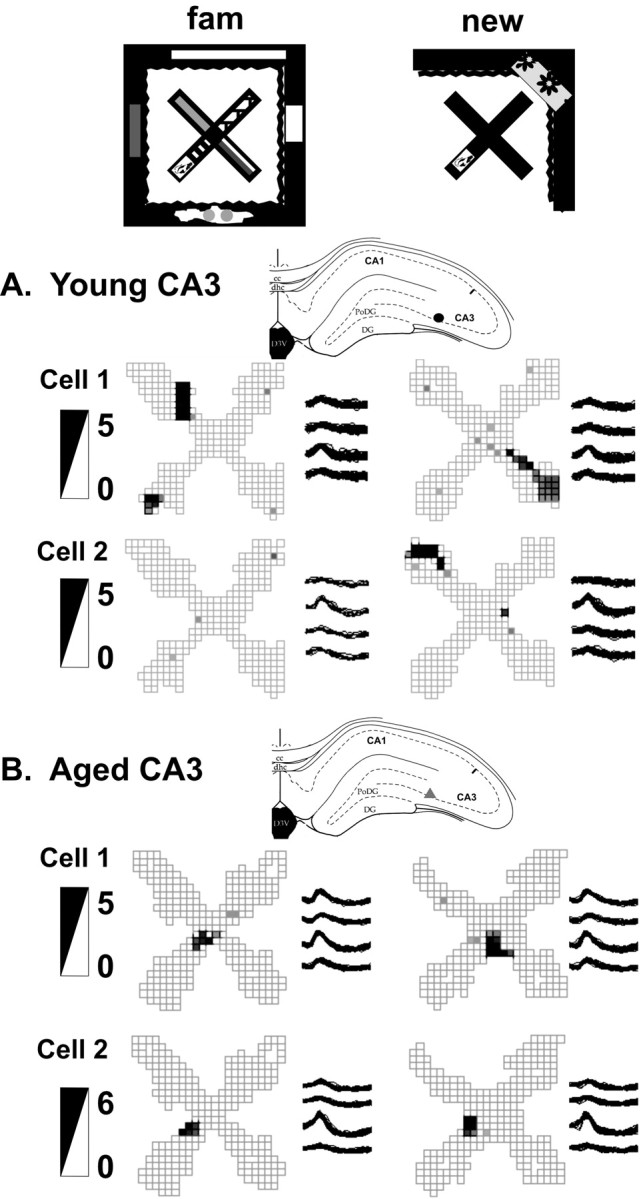Figure 3.

Examples of young (A) and aged (B) CA3 place fields. The top row depicts the experimental setup with the familiar (fam) environment and novel environment 4. The recording sites, the place fields, the tetrode waveforms, and the firing rate scale (in spikes per second) of two simultaneously recorded cells from each rat are shown. Note that young CA3 cells created new spatial representations, and often some were active in only one environment (young cell 2). In contrast, the aged CA3 cells used similar place field representations for both environments and scarcely changed their firing rates. cc, Corpus callosum; PoDG, polymorphic region of the dentate gyrus; DG, dentate gyrus; D3V, dorsal third ventricle; dhc, dorsal hippocampal commissure.
